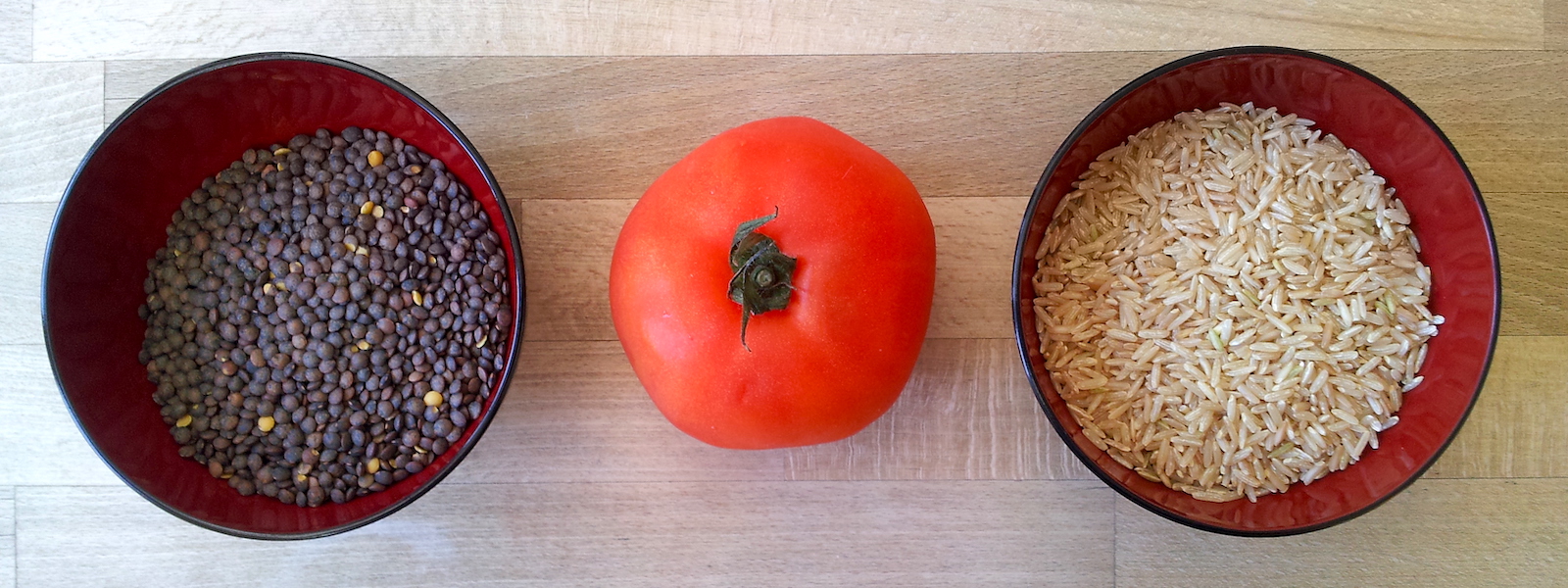Going vegan
If you have recently decided or are considering to become vegan, it’s important to get off to a good start. Going vegan is great but there are some common pitfals if you come from a omnivorous diet. Just cutting out all non-plant-based food might leave you feeling dissatisfied, and craving some of your old food. If your vegan meals are not nutritiously balanced, this will also affect your health. Both are common reasons why people give up on a vegan diet.
The good news is that making balanced and tasty vegan meals is quite easy. You could of course just make one of my recipes, but if you want to make your own, here are a few simple guidelines, supported by expert nutritional advice. But let’s first have a look at the fundamentals of a healthy diet.
Fundamentals of a healthy diet
A healthy diet should provide your body with the following:
-
Proteins, for growth and maintenance. Our bodies do not use the proteins we eat directly, but break them down into amino acids. There are nine essential amino acids which we must obtain from our diet to prevent protein-energy malnutrition. Making sure our meals contain sufficient amounts of these is easy, there are several foods such as beans and pulses that are “complete proteins” which provide all essential amino acids.
-
Vitamins and minerals , nutrients our bodies need in small amounts to work properly and stay healthy. From this angle, there is not much difference between a vegan diet and other diets, with the exception of vitamin B12. As there are no plant-based sources, this needs to be taken as a supplement.
-
Essential fatty acids , needed for many physiological processes, including maintenance of cell membrane structure and skin integrity. There are only two of them, omega-3 and omega-6 fatty acids. Again, they are easy to add to your diet: several types of nuts, seeds and vegetable oils are good sources.
-
Carbohydrates, for energy and to aid digestion. Although recently “carbs” got a bad reputation, they are really essential for a healthy diet. There are three main types of carbohydrates: sugar, starch, and fibre. For a healthy diet we need all of them, in the right amounts. The main sources are typical starchy foods like rice, pasta and potatoes. The less refined the food, the better as a source of fibre.
It’s not really neccessary to have all components for every meal though, as long as your diet on the whole provides them.
Simple guidelines
That may seem like a lot to take in. So how do you make sure you get all these on a daily basis? I use as a very simple rule that my meals should have:
- A source of protein. Based on the “Protein Digestibility Corrected Amino Acid Score”, the best sources are tofu, soy beans, chick peas and black beans, but other types of beans or pulses are good too. I use about 100 g per person per meal.
- A source of starchy carbohydrates, such as rice, pasta and other grain-based foods, or potatoes and similar root vegetables. For rice or pasta I use about 100 g per person per meal, for potatoes about 250g (uncooked weight).
- A source of fresh vegetables, whatever you like, but as much variety as possible. These provide you with vitamins and some of the minerals, as well as some carbohydrates and protein. I use about 200 g per person per meal (uncooked weight).
- Some nuts or seeds, like pumkin seeds, sunflower seeds or walnuts. These are great sources of omega fatty acids and minerals. Just a handful is enough.
With these guidelines, you can be confident your vegan meals are balanced.
All Quick & Tasty recipes follow this pattern. Why not get started with some of my favourites:
- Very quick and easy to make: soba noodles with edamame soy beans.
- Very simple: a stir-fry of carrots, potatoes and chickpeas.
- A bit more special: a stir-fry of butternut squash, pear and black-eyed beans with brown rice.
Resources
- NHS advice on vegan diet
- An Introduction to Nutrition (Zimmerman), a free textbook from the LibreTexts library
- Harvard School of Public Health’s “Nutrition Source”
